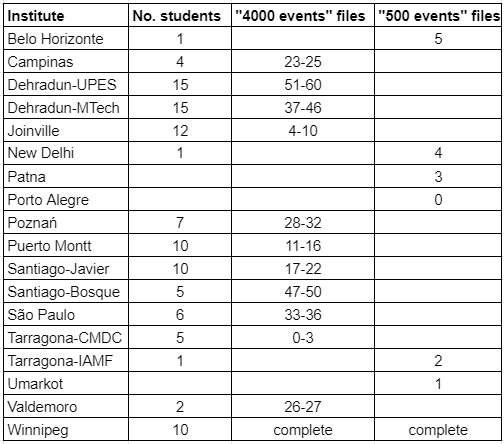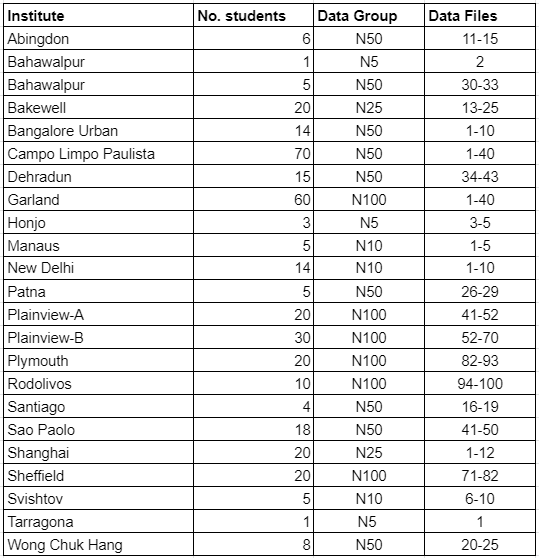BAM Data Assignments
Find your Institute in the ATLAS table or the CMS table, according to the measurement for which your class is registered. Institute names are the same as city or town names. If there is more than one participating institute in the same city, an additional identifier is added.
If the number of of students was not given in registration, it is left blank here but it was only assigned one data or event file. If you need more files, email Ken.
The teacher or leader should assign one file per two students. Pairs of students are expected to work together electronically either using school videoconferencing or by their own means. (Most high school students have no problem with this.)
ATLAS Institutes

CMS Institutes

